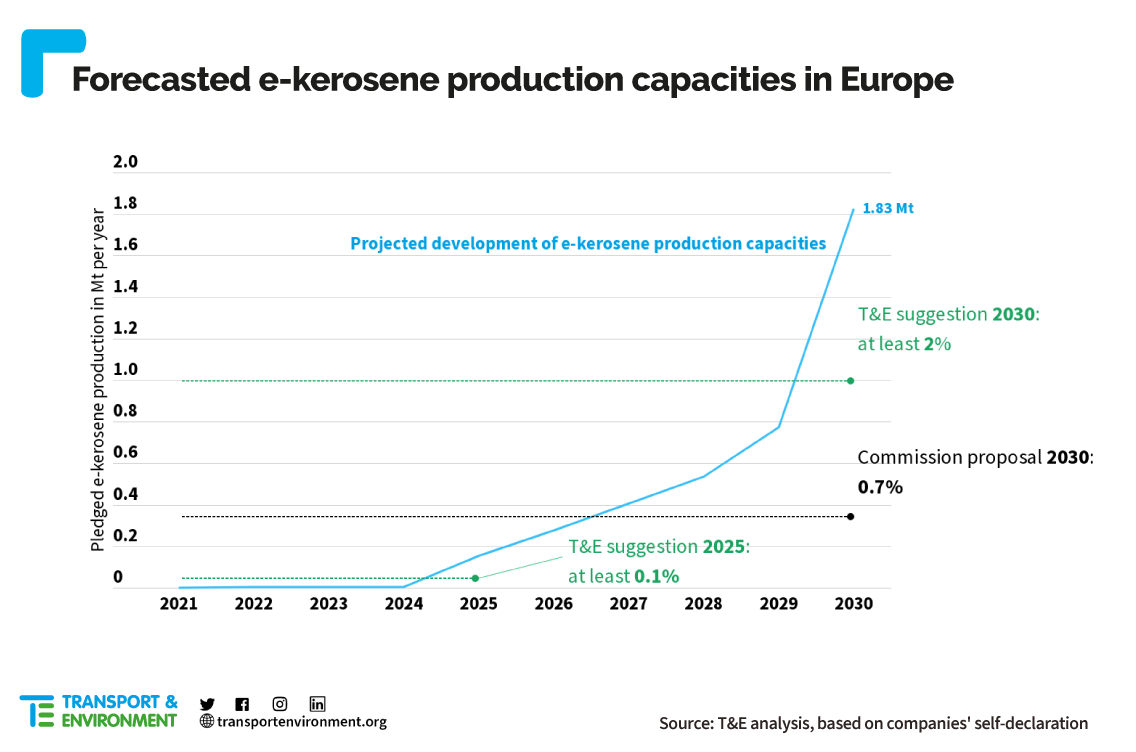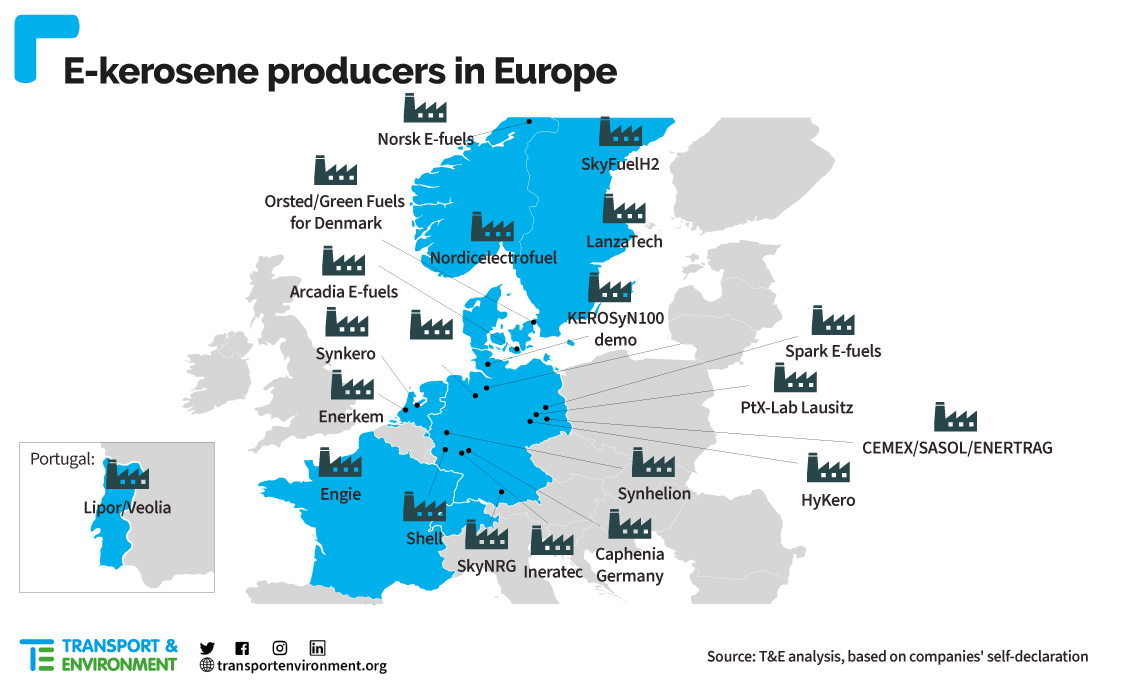Green aviation
Courtesy : www.transportenvironment.org/
E-kerosene (1), generated by combining green hydrogen (H2) and carbon dioxide (CO₂), has the potential to substantially reduce the climate impact of aviation. In its new forecast, T&E has analysed the planned production capacity of 18 European e-kerosene manufacturers. By 2025, T&E finds that over 0.16 Mt of e-kerosene would be available for airlines every year. By 2030, this figure will reach over 1.83 million tonnes. This represents 3.65% of fuel demand in Europe and would save the equivalent of up to 5 Mt of CO2 (2)– or the emissions equivalent to 30,000 transatlantic flights (3).
T&E’s new analysis shows that the European e-kerosene market is ready for higher rates and faster scaling of this fuel, but that policy makers are not providing sufficient incentives to develop the production further. In order to decarbonize aviation fast and efficiently, e-kerosene needs to be made readily available for airlines to blend into their existing jet fuels.

Matteo Mirolo, aviation policy officer at T&E, said: “ Green e-kerosene is the clean jet fuel of the future and must be the go-to option for airlines and policy makers alike. The opportunity for Europe is unprecedented in terms of climate impact reduction, job creation and fuel strategic autonomy. Now, it’s time for national and European legislators to drive the uptake and mandate the use of e-kerosene in aviation.”
Two conditions are essential for e-kerosene to have near zero greenhouse gas emissions and to be produced at scale. First, hydrogen needs to be produced using additional renewable electricity (so-called “green hydrogen”). Second, carbon dioxide needs to be captured from the atmosphere, a process otherwise known as direct air capture (DAC). T&E’s new analysis shows that seven out of 22 manufacturers plan to include DAC as a source of CO2.

In July 2021, the European Commission proposed new legislation called ReFuelEU, to increase the share of sustainable aviation fuels (SAF) in Europe. The Commission has proposed SAF-blending mandates combined with an e-kerosene fuel subtarget. Since the original proposal landed, ReFuelEU has faced heavy scrutiny. A number of EU member states have been reluctant to keep the climate ambition of the text, going as far as including unsustainable biofuel feedstocks.
The targets for e-kerosene proposed by the European Commission in its ReFuelEU proposal are too low and start too late (no mandate in 2025 and only 0.7% in 2030). T&E’s new analysis shows that an earlier and more ambitious e-kerosene mandate of at least 0.1% in 2025 and 2.0% in 2030 is possible. This should come in lieu of biofuels derived from unsustainable feedstocks.
Matteo Mirolo added: “Europe has a once in a lifetime opportunity to become the leader for green aviation through its ReFuelEU proposal. For that, policymakers have to prioritize the right type of sustainable fuels: rather than biofuels derived from unsustainable feedstocks, the EU needs to raise the game on e-kerosene.
Note to editors:
(1) The terms “e-fuel”, “synthetic kerosene”, “synfuels” and “power-to-liquid” are often used interchangeably. E-fuels is a broader term covering all fuels produced using electricity; e-kerosene refers to a subcategory of e-fuels suitable for aviation.
(2) The emissions savings are calculated using 85% of GHG savings for e-kerosene compared to fossil kerosene. As data about the commercial production of e-kerosene are not easily available, the average between the legally required minimum GHG savings for RFNBOs (70%) and the maximum (100%) is used as a proxy.
(3) Emissions from a typical transatlantic flight are calculated as an average of emissions from flights between Europe and North America, using AIS data from PlaneFinder (2019) and the Eurocontrol CO2 calculator.




